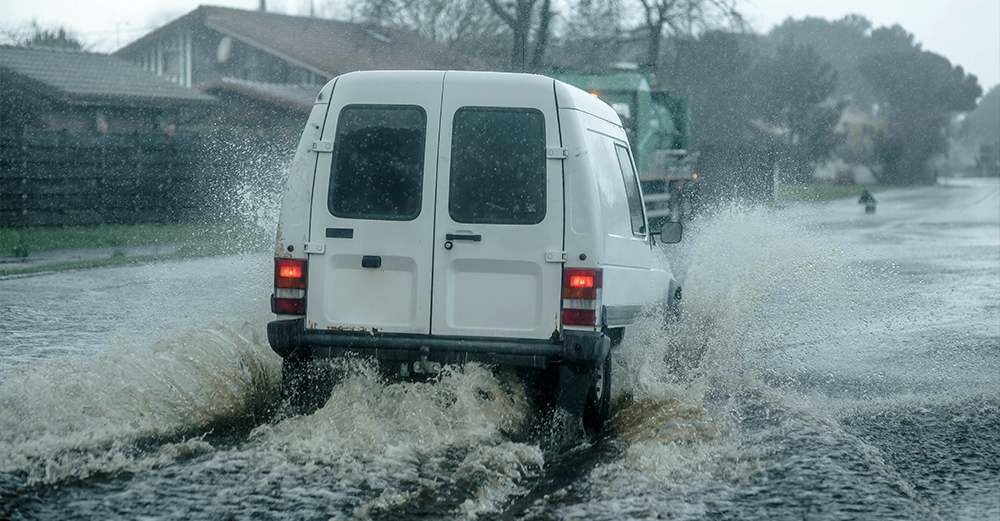Protecting Your Vehicle Fleet: Preparation is Key when Floods Threaten

UTICA NATIONAL RISK MANAGEMENT ALERT

Floods can be serious catastrophes and are one of the most common hazards in the United States. Floods can be caused by a variety of factors, including a sudden accumulation of rain, rising rivers, tidal surges, ice jams and dam failures. Here are some tips on safeguarding your vehicle fleet:
Plan for the threat
- A flood response plan should be created and communicated to all employees in the same way you would communicate any other safety plan. Consider the following in your plan:
- Who (owner, manager, supervisors) will have the authority to initiate the plan?
- How will employees responsible for moving vehicles be alerted in the event of a flood emergency?
- Which vehicles are critical and will be moved first from the flood threat?
- Decide on an alternate site(s) located on high ground outside of your flood zone. A widespread flood event may necessitate you to relocate vehicles for several days or longer, so choose the site for both security and elevation.
- Consider primary and secondary travel routes to the alternate site. Depending on the severity and speed of the flood onset, your regular travel routes may be blocked/flooded.
- Prohibit drivers from driving through flooded areas. Consider that 6 inches of water will reach the bottom of most passenger cars, causing loss of control; 1 foot of water will float many vehicles; and 2 feet of running water can carry away most vehicles, including sport utility vehicles and pick-ups.
Monitor the situation
Keep an eye on the National Oceanic and Atmospheric Administration’s (NOAA) weather network or your local media outlets to stay aware of changing conditions. Receiving information about the threat of flooding as early as possible will enable you to act more quickly and implement your flood response process more successfully.
Review your plan at least annually and update it as needed
It’s also useful to critique your flood response following an actual event to troubleshoot and make improvements the next time the water rises. The following planning resources can help:
- National Weather Service – Flood Safety Tips and Resources ››
- Occupational Safety and Health Administration – Flood Preparedness and Response ››
- Ready.gov Flood Page ››
- Ready Business Inland Flooding Toolkit ››
5-R-1413 | Ed. 11-2021
